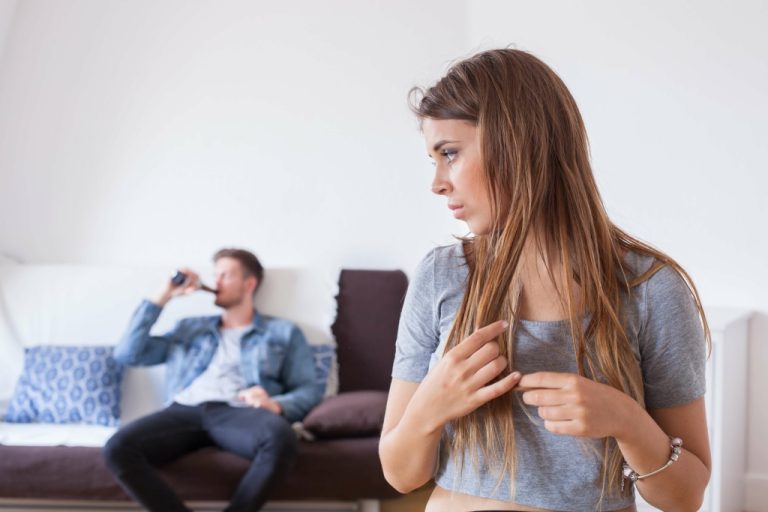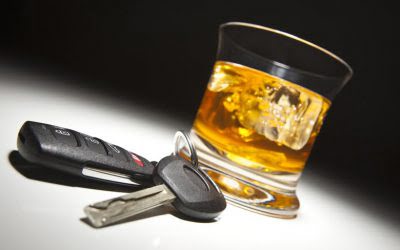Why Alcohol May Worsen Anxiety Symptoms
Previous trials have evaluated buspirone among patients with comorbid generalized anxiety disorder (or anxiety symptoms) and AUDs. The majority of these studies have found reductions in both anxiety and alcohol outcome measures, including cravings (Bruno 1989; Tollefson et al. 1991) and drinking measures (Kranzler et al. 1994). However, one study found no effect of buspirone on either anxiety or alcohol use (Malcolm et al. 1992).
Understanding Anxiety Secondary to PTSD: Symptoms, Ratings, and Related Conditions
This article provides an overview of the evolving perspectives of this association in the context of three related disciplines—psychiatry, psychology, and neuroscience. Psychiatric and epidemiological studies show that having either an anxiety- or alcohol-related diagnosis elevates the prospective risk for developing the other disorder. From the psychological perspective, behavioral research demonstrates that drinking to cope with negative affect is a potent marker for current and future problems with alcohol. Neuroscientific research implicates overlapping neurobiological systems and psychological processes in promoting the rise of negative affect and alcohol misuse.
A model of care for co-occurring AUD and other mental health disorders

Lorazepam is typically prescribed for acute anxiety or panic attacks related to alcohol use. Like diazepam, it is not recommended for long-term use due to the risk of dependence. By understanding the relationship between these two issues and seeking appropriate help, individuals can break free from the anxiety-alcohol cycle and work towards a healthier, more balanced life.
It is generally agreed that problems related to alcohol use and anxiety tend to occur within the same individual (« comorbidity »); however, the cause of this association remains controversial. Three prominent perspectives are that anxiety disorder promotes pathological alcohol use, that pathological alcohol use promotes anxiety disorder and that a third factor promotes both conditions. We review laboratory, clinical, family, and prospective studies bearing on the validity of these explanatory models. Findings converge on the conclusion that anxiety disorder and alcohol disorder can both serve to initiate the other, especially in cases of drug addiction treatment alcohol dependence versus alcohol abuse alone. Further, evidence from clinical studies suggests that anxiety disorder can contribute to the maintenance of and relapse to pathological alcohol use. Medications that target a brain signaling system which uses the neurotransmitter serotonin and its receptors perhaps are the safest and most widely used agents to treat anxiety disorders.
How does self-medication with alcohol impact mental health?
Quality sleep is necessary for the body to restore itself during the night, healing physical and emotional wounds. It prevents you from cycling through all the stages of sleep, especially during deep and REM sleep, where restoration occurs. Alcohol use disrupts the body’s normal patterns, leading to physical changes like dehydration and sleep disruptions, as well as psychological effects like social anxiety and the worsening of other mental health conditions. Dealing with anxiety after quitting drinking can be a challenging but crucial aspect of the recovery process. As the body adjusts to sobriety, individuals may experience heightened anxiety due to the absence of alcohol’s sedative effects and the underlying issues that may have initially led to substance use. For some individuals, the effects of alcohol on anxiety can extend beyond the immediate drinking session, leading to anxiety symptoms https://ecosoberhouse.com/ that persist for days afterward.
- The significance of strict alcohol legislation and cultural norms on Saudi Arabia’s broad patterns of alcohol consumption are highlighted by this consistency.
- Globally, as the prevalence of anxiety disorders increases in high-income countries, as alcohol use increases, policy implementation is preferable.
- For those seeking addiction treatment for themselves or a loved one, all phone calls are confidential and are available for 24/7 help.
- Among people with co-occurring AUD and psychiatric disorders, AUD remains undertreated, leading to poorer control of psychiatric symptoms and worse outcomes.
For those concerned about their physical health, it’s worth noting the connection between mental well-being and organ function. Understanding liver anxiety symptoms can provide insight into how alcohol use affects both mental and physical health. Preceding the Granger causality test, the researchers investigated the stationarity of anxiety in connection to wine, beer, and spirits, respectively. The study served the Dickey-Fuller unit root test, developed by David Dickey and Wayne Fuller in 1979. This test’s null hypothesis is that there is a unit root, which implies the data arrangement is not stationary.
- Panic disorder differs from anxiety disorders in that sudden episodes of intense fear or discomfort characterize it.
- If you have out-of-network benefits, and utilize out-of-network services, you are subject to the plan’s cost-sharing obligation and balance billing protections.
- Without these, you can experience changes in heart rate, breathing, and other symptoms that lead to anxiety.
How Alcohol Affects Physiological Symptoms of Anxiety
Your body can have an uncomfortable sensation the next day as a result, which can feel like a nervous energy or anxiety. Drinking can also cause hangovers, which usually consist of symptoms like nausea, dizziness and headaches. In support of improving patient care, CME/CE activities offered have been planned and implemented by the Postgraduate Institute for Medicine and NIAAA. To earn AMA, AAPA, ANCC, ACPE, or ABIM MOC credit, review this article, then use the does alcohol give you anxiety link below to log into or create a CME University account.
The Relationship Between Alcohol and Anxiety Disorders
Social Anxiety Disorder, as its name suggests, is chronic anxiety when dealing in social settings. It is not just shyness, like many tend to think, but actual physical sickness when someone anticipates or is involved in a social situation. Like other anxiety disorders, it is not uncommon for phobias to grow out of anxiety.
Opponent process model

When depressed or anxious alcohol-dependent people are asked their opinions about cause and effect, they often reply that they believe they drink in order to cope with their symptoms of sadness or nervousness. Alcohol can also make anxiety worse because it affects the levels of other mood-influencing chemicals like serotonin. Research notes that changes in chemical levels such as serotonin can cause anxiety disorders and depression. On the other hand, it is not uncommon for someone who has become addicted to alcohol to develop symptoms of anxiety. This can happen because of the effects that alcohol abuse can have on the person’s body, or from withdrawal if they go too long without a drink. It is difficult for those who have developed symptoms of both alcoholism and anxiety to truly remember what came first, but figuring that out can be a monumental step in their recovery.

Examining the variables’ interdependencies across time is made possible by the Vector autoregression model, which represents the joint evolution of the selected variables. The relevance of the lagged values of one variable in forecasting the future values of another is evaluated using statistical tests after the estimation of the Vector autoregression model. In a Granger causality test, the null hypothesis states that previous values of the first variable do not contribute to the second variable’s prediction beyond the earlier values of the first variable. Indicating that the first variable does have a predictive impact on the second, the rejection of this null hypothesis suggests the existence of Granger causality. It is crucial to understand that Granger causality finds predicted associations based on temporal patterns rather than establishing actual causation in the conventional sense.
The Sequential Approach
A study (86) shows that Topiramate could improve anxiety symptoms in alcohol-dependent patients, while some benefits with naltrexone have been described (92, 93). Paroxetine was found to be effective in social anxiety plus AUD (71–73) and Sertraline (74–76) is effective for PTSD among alcohol-dependent patients, especially in lower risk/severity of alcoholism. However, SSRIs should be used with caution when patients are actively drinking because they may increase alcohol consumption (78, 79). The relationship between alcohol and anxiety is a multifaceted one, with implications that extend beyond the immediate effects of drinking.




